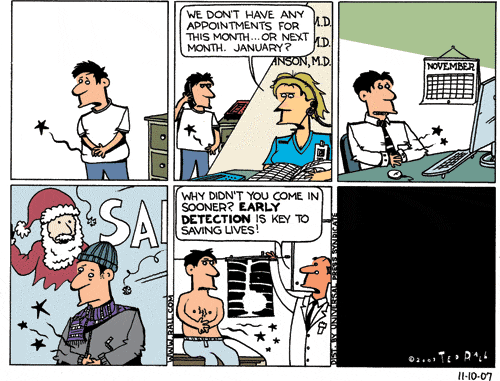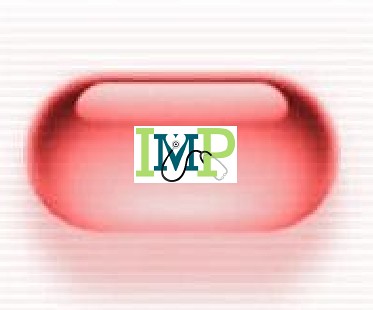I read about your idea several years ago. Here's the deal, that bugged me from the start, and still gets to me.
While on the one hand you do spend more time with patients, and likely make better decisions, you also miss out on a crucial element of civilization. Division of labor! Why on earth do you have to waste hours at a stretch calling insurance companies yourself, or waiting for patients to fill out forms and stuff? Also, simple tasks like bp and blood draws and injections and a host of other things can be done just as effectively by a nurse. I mean, what's the point in about 11 years of education, otherwise?
Basically, it seems like there is in principle a good reason why a medical practice almost always has at least a couple of employees. Course, if you hired two people (a nurse and a receptionist/biller) then you'd have to see more patients to pay the additional overhead.
Furthermore, hiring 2 employees and so forth makes a business have a lot of overhead (which would be less if there were 2 doctors and shared staff). Also, we haven't discussed the fact that you could also do a lot more with advanced medical equipment, which costs stacks of money. Ultimately, once it is all said and done you see why the basic clinic with several doctors, shared support staff, ect is the minimum "cell size" for most medical practices.
Ultimately, it's a circular argument. I see why you do what you do, even though "in theory" it's terribly inefficient for society.
Thanks for your comments, Gerald.
First of all, I believe that one size does not fit all, and that it is OK that some people prefer doctors who answer their own phones and enjoy getting to know their patients, while other patients prefer doctors who have huge medical offices with lots of employees. Kind of like how some people prefer The Parkway Grill while others go for McDonald's. It's just food, after all, right?
Second, the more advanced medical equipment you have, the more you want to use it in order to make enough money to justify buying it in the first place. Then after you've paid it off, you want to make more "stacks of money", so that you can buy even more advanced medical equipment, which you then want to use so you can make enough money to pay for it, etc.
That is one of the premises of the book, "Overtreated: Why Too Much Medicine is Making Us Sicker and Poorer", which one of my patients told me about (thanks, RS!).
Is a CT scan always necessary after your child suffers a bump on the head? Should you think twice before undergoing surgery for lower back pain? Are your elderly parents going to be allowed to die at home, or will they spend their last few weeks in a hospital, hooked up to machines and tubes, subjected to painful, unnecessary procedures?
These are the kinds of questions you may find yourself asking once you’ve read Overtreated. Each year, our medical system delivers an enormous amount of care that does nothing to improve our health or lengthen our lives. Between 20 and 30 cents on every health care dollar we spend goes towards useless treatments and hospitalizations, towards CT scans we don’t need, towards ineffective surgeries—towards care that not only does nothing to improve our health, but that we wouldn’t want if we understood how dangerous it can be. This is the surprising and deeply counterintuitive message of Overtreated.
Of course, almost everything in our personal experience says just the opposite, that far from delivering too much care, our medical system isn’t giving us enough. Forty-seven million of us don’t have coverage, and even those of us who do have health insurance feel as if our insurers and doctors are continually trying to deny us treatments and tests and drugs that could help us.
Yet as award–winning journalist Shannon Brownlee shows in this remarkable book, much of what we think we know about health care is simply wrong. With probing insight and facinating examples, Brownlee unveils its topsy-turvy economics, where the supply of medical resources—beds, specialists, intensive care units—determines what care we receive, rather than how sick we are and what we actually need.
I have been tempted to do EKGs on otherwise healthy men and women during their physicals, just because I know that it can generate another $30 to help pay for my $2000 EKG machine. But I don't because I know there is no indication or evidence to justify it. What if I had a $35,000 DEXA scanner? You bet I would screen for osteoporosis a lot more, in women AND men.
Lastly, I wonder which of the following is the most "terribly inefficient for society", hypothetically speaking?
1. Doctors who spend 90-100% of visit time with a patient in order to get to know them better so that they can provide their patients with the medical care they want and need in an enjoyable and sustainable practice.
2. A doctor who uses 3 part-time nurses and a medical assistant to take histories, document encounters, instruct the treatment plan so that he can "see" an average of 38 patients a day, liberating him to spend an average of about 5 minutes per patient (and boosting his income by 70 percent!).
3. A healthcare system that takes money from patients, then uses 1/4 of it to pay people to do their best to give as little of the rest of the money as possible to the doctors who actually take care of patients, forcing them to hire people to waste hours at a stretch calling the first group of people who explain that they won't pay the doctor because they entered the wrong code.
4. Killing all persons with defective genes, selectively breeding people to be smarter, stronger, more resistant to disease, forcibly limiting population size so as not to overuse limited natural resources, having a central world dictatorship that eliminates all wars, famine, poverty, crime and reality TV shows. In other words, world peace.
I vote for number 3.







